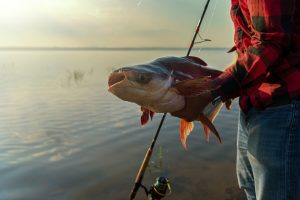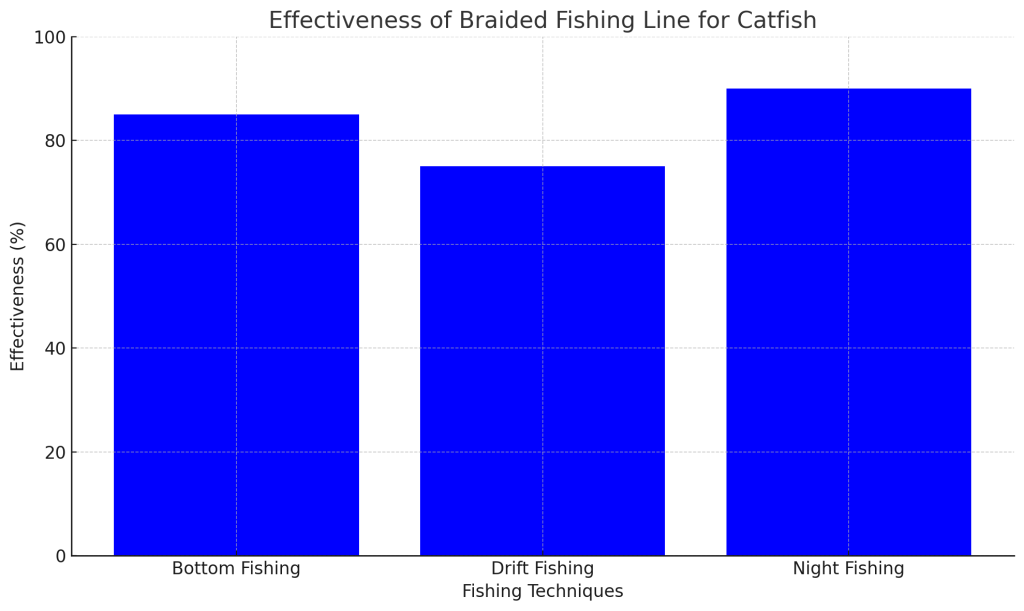Currently Empty: $0.00

Catching catfish is a popular activity for anglers of all skill levels. These resilient fish are found in various water bodies, from rivers and lakes to ponds and reservoirs. Understanding their habits and preferences can increase your chances of success. In this guide, we’ll cover everything on how to catch catfish, including the best equipment, bait, and techniques.
Understanding Catfish Behavior
Catfish are known for their bottom-dwelling habits. They are often found in areas with muddy or sandy bottoms, where they can easily find food. Catfish are most active during the evening and early morning hours. This is when they come out to feed, making these times ideal for fishing.
Choosing the Right Equipment
The first step in catching catfish is selecting the right equipment. A sturdy rod and reel are essential, as catfish can put up a strong fight. Medium to heavy action rods are recommended. When it comes to fishing line, braided fishing line for catfish is highly effective. It offers strength and sensitivity, allowing you to feel even the slightest bites.
Bait Selection
Choosing the right bait is crucial for catching catfish. They have a keen sense of smell and are attracted to strong, pungent baits. Common choices include chicken liver, shrimp, and stink baits. Live bait such as minnows and nightcrawlers can also be highly effective. Experiment with different baits to see what works best in your area.
Rigging Your Line
Properly rigging your line is essential for success. A slip sinker rig is a popular choice for catfishing. This rig allows the catfish to take the bait without feeling the weight of the sinker. Attach a sinker to your main line, followed by a swivel, and then tie a leader with a hook. Braided fishing line for catfish is ideal for this setup due to its durability and strength.

Finding the Right Spot
Location is key when it comes to catfishing. Look for areas with structure such as fallen trees, rock piles, and deep holes. Catfish often hide in these areas during the day. In rivers, focus on bends and areas with slower current. In lakes and ponds, try fishing near the dam or other deep areas.
Fishing Techniques
There are several techniques you can use to catch catfish. One of the most popular is bottom fishing, where you cast your bait and let it sink to the bottom. Another effective method is drift fishing, where you let your bait drift with the current. This can cover more area and increase your chances of finding active catfish.
Night Fishing
Night fishing is particularly effective for catching catfish. As nocturnal feeders, catfish are more active after dark. Use a good quality headlamp or lantern to help you see what you’re doing. Braided fishing line for catfish is especially useful at night because of its sensitivity and strength, allowing you to detect bites even in the dark.
Handling Catfish
Once you’ve hooked a catfish, handling it properly is important. Use a landing net to bring the fish in, and be cautious of their sharp spines. Wet your hands before handling the fish to protect its slime coat. If you plan to release the catfish, do so gently and quickly to minimize stress. Here is a guide on handling a catfish sting.
Conservation Tips
Practicing catch and release is important for the conservation of catfish populations. Always use barbless hooks or crimp the barbs to make releasing the fish easier. Avoid fishing in extremely hot or cold conditions, as this can stress the fish. Follow local regulations and size limits to ensure the sustainability of catfish in your area.
Final Thoughts
Catching catfish can be a rewarding and enjoyable experience. With the right equipment, bait, and techniques, you can increase your chances of success. Remember to visit our shop for braided fishing line for catfish to take advantage of its strength and sensitivity. Whether you’re fishing during the day or night, patience and persistence are key. Happy fishing!


